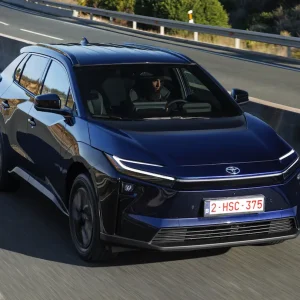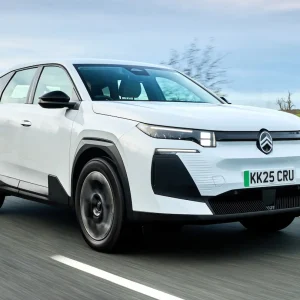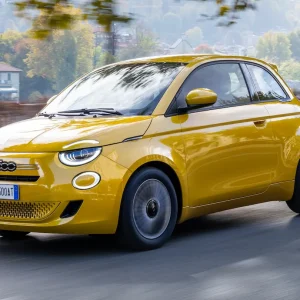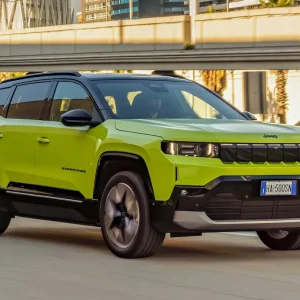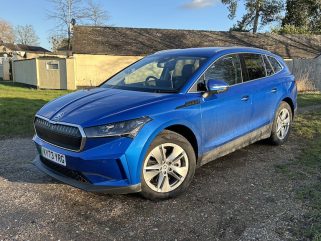
On sale for over three years, the ongoing success of Skoda’s first EV, the Enyaq, seems unstoppable. In the first nine months of last year alone, the Czech company shifted 55,000 worldwide – an increase of 47% over 2022. To keep these buyers coming back, and attract new customers, Skoda announced comprehensive technical upgrades for the Enyaq at the end of last year – and we’ve just got our hands on the new 85 in Edition spec to see how these upgrades benefit the customer.
The biggest changes, apart from the loss of the ‘iV’ part of its name, are the addition of this 85 Edition along with 85x SportLine models, which replace the 80 versions. As a result of the new, more potent drivetrain and permanent synchronous motor, power is up to 282hp, 85hp more than the outgoing ’80’; 0-62mph acceleration now takes 6.7 seconds, which is two seconds faster, with a top speed of 111mph. Choose the vRS performance range-topper, and power increases further to 335hp, although the entry-level 60 is unchanged.
However, this extra performance is not at the expense of efficiency, as all Enyaqs now have an optimised battery, with more advanced thermal management, increasing the range of this Edition, to over 348 miles. And it can be charged at up to 135kW, which is unchanged.
Outside, one of the reasons why the Enyaq has been so successful in our opinion, is that it has been inconspicuously styled compared to other Volkswagen Group rivals – it doesn’t stand out. Many fleet drivers don’t want to advertise their move to EV, and this Skoda just looks like a modern estate and fits in with the rest of their range. As such, there are no changes to the exterior of these upgraded Skoda EVs.
Inside, our car had the Loft interior, which combines black and grey tones, and combined with the space – especially in the back – all adds to the contemporary feel.
Instrumentation is still taken care of via a small digital screen in front of the driver. The most obvious change in this Enyaq’s interior is the infotainment, which works via the 13in screen. This, the head-up display, and virtual cockpit, work on the new Skoda CI/CD menu structure with new navigation maps. As a result, it is now possible to customise ‘quick access buttons’ for various vehicle settings, particularly useful during the cold winter week we had this car, as there was a button for windscreen heating. However, other options include operating the lane assist, or operating the navigation system. Talking of the sat-nav, there are new graphics for the maps, and the map is much larger on the screen than before. Plus, there is easier access to other sub-menus.
With its unchanged 585 litres, the Skoda Enyaq’s boot is one of the biggest fitted to an EV. This extends to 1,710 litres with the rear seats folded, although the load area isn’t totally flat.
With a soft suspension set-up and 19in wheels, the Enyaq 85 is as comfortable and compliant as the previous 80 versions that we tested. Although, the ride can feel oddly harsh in some situations, then sometimes the Enyaq’s squashy ride can feel like it’s struggling with the over 2t weight. It is not the most involving car to drive, but grip levels remain high. The extra performance can most noticeably be seen through acceleration, as the Enyaq feels far more capable than you’d imagine. Although, you’ll wish Skoda’s engineers had spent more time calibrating this car’s pedals, as feel when accelerating is too keen – in fact, the mushier pedal feel in ‘Eco’ feels more natural, in our opinion. The range is also decent, although it was closer to 250 miles.
Despite the updates to the drivetrain, the Enyaq still has all the qualities that made the original version our Company Car of the Year in 2021. It remains one of the best EV all-rounders in the company car market and deserves its continued success.
Skoda Enyaq Edition 85
P11D: £44,485
Residual value: N/A
Depreciation: N/A
Fuel: £3,867
Service, maintenance and repair: N/A
Cost per mile: N/A
Range: 348 miles
CO2 (BIK %): 0g/km (2%)
BIK 20/40% a month: £14/£29
Luggage capacity: 585 litres
Battery size/power: 82kWh/282hp

